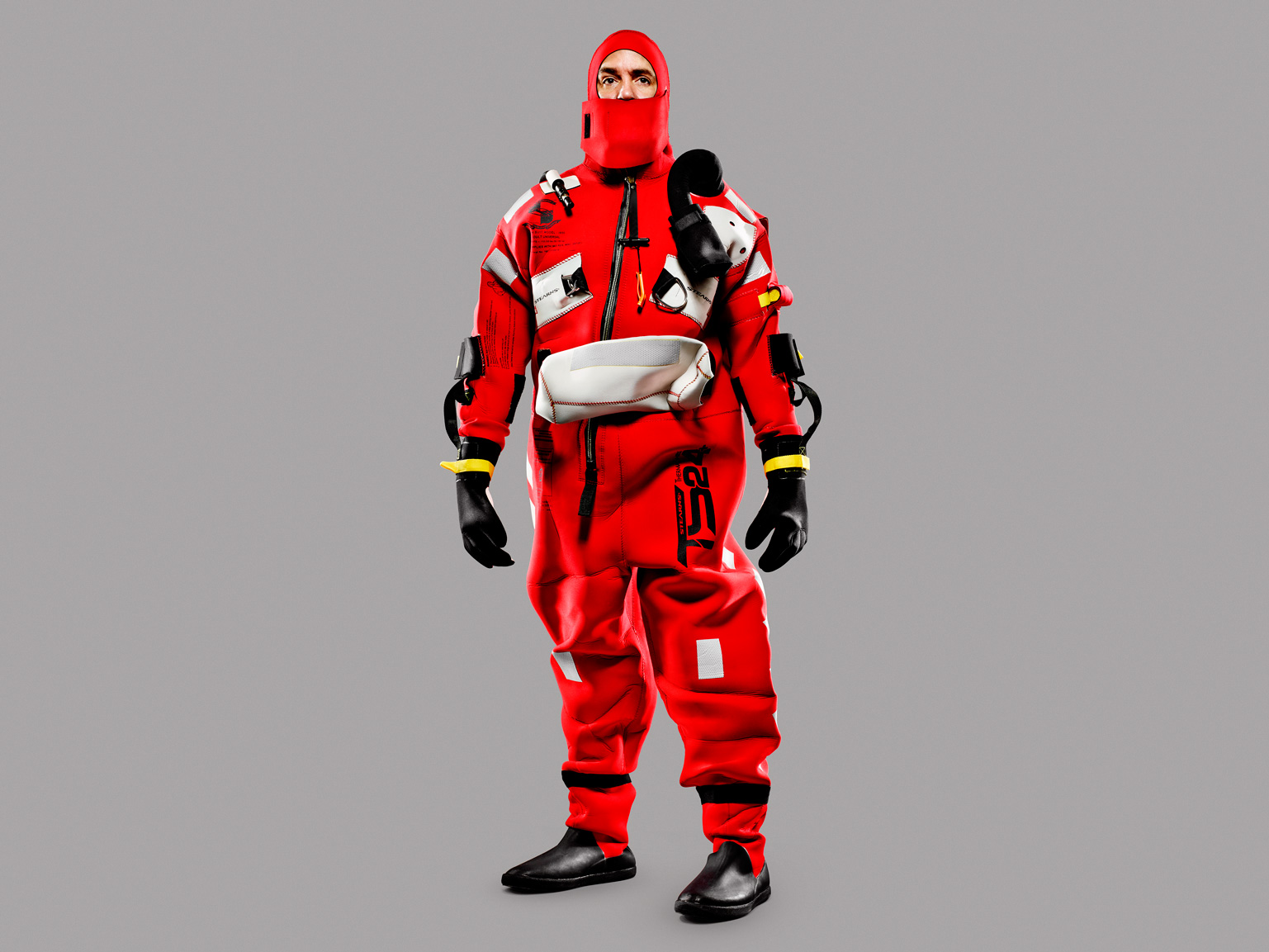

When a ship sinks at sea and you’re thrown into the water, hypothermia sets in quickly, so every second counts. An immersion suit is designed to buy you time. Constructed like a surfer’s wetsuit, it keeps you warm for up to three to six hours, until help (hopefully) arrives. Smart sailors and fishermen carry them and, when on a boat, so should you: Even a plunge into 50-degree water will induce hypothermia within 60 minutes.
But what if help is a long time coming? The Stearns I950 ThermaShield 24+ bills itself as the most advanced immersion suit made, one that can extend that crucial in-the-water survival window up to 24 hours, and keep you alive even in freezing (32°F) water. How good is this suit? I couldn’t leap from an arctic charter to test its outermost limits at sea. But I was able to try it in northern Vermont, in early November, with snow falling, and the water in Lake Champlain hovering at that 50-degree mark. So here’s what I did.
I went down to the dock, lifted the suit’s neoprene one-piece over my body, and threw myself in. I immediately bobbed to the surface and floated. The suit has enough buoyancy to support 330 pounds. (Let’s just say I’m about a third of that.) A large air pillow on the rear of the suit naturally oriented me to float on my back. Breathing into a valve on the right shoulder fills the air pillow. Breathing into a valve on the left shoulder circulates warm breath around the core (to protect vital organs), and then arms, hands, feet, and legs.

The hood blocks sound, so I couldn’t do much but look at the clouds. More tube breathing made me warmer and more buoyant. My fingers got wet because I didn’t cinch the suit’s wrist straps. Those fingers got cold fast. But the suit’s designers foresaw this problem: Jam your hands in the hand warmer sewn onto the stomach, then back into the gloves, and they stay as warm as need be.
I floated like that for an hour, just long enough to (theoretically) get hypothermia. But I was fine. I had, however, floated several yards from shore, and swimming back was awkward: I managed a floundering backstroke back to the dock. While I am sure I could have floated all night, I’m glad I didn’t have to.
This article was originally published in the January/February 2016 issue of Popular Science.
